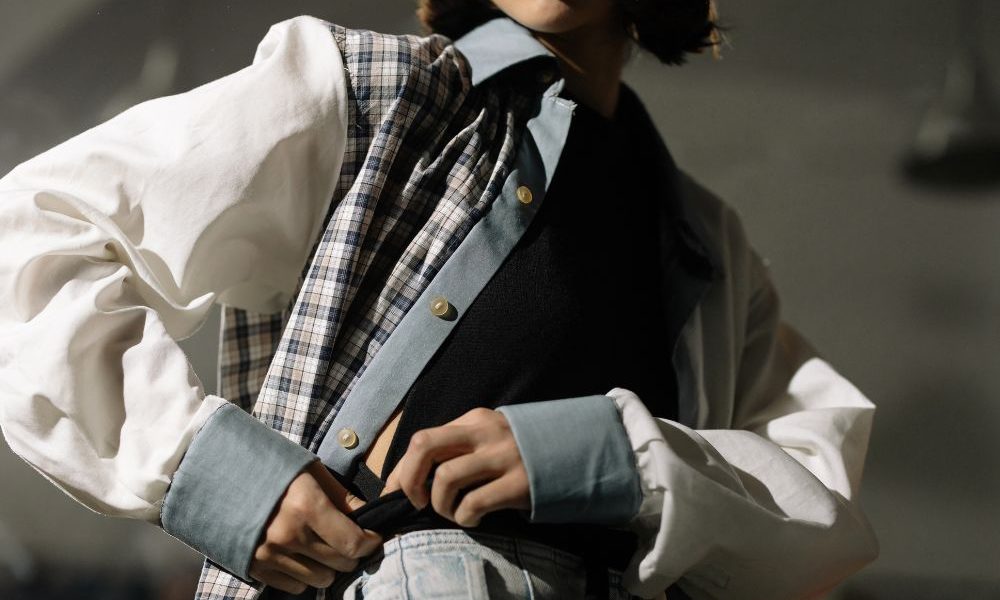Layering is a timeless fashion technique that allows you to create stylish, functional, and adaptable outfits suitable for any weather. By combining different textures, weights, and proportions, you can craft looks that are both fashionable and practical. This guide will walk you through the art of layering, offering insights from fashion experts and personal anecdotes to help you master this essential skill.
Why Layering is Important
Function and Fashion
Layering is not just about keeping warm; it’s a method to add depth and interest to your outfits. Emily Current and Meritt Elliott, fashion designers and stylists, explain, “Layering is the key to a well-balanced and interesting outfit. It’s about combining different textures, weights, and proportions to create a look that’s both stylish and functional” (The Great Blog).
Adapting to Weather
Layering allows you to adjust your clothing throughout the day as temperatures change. This flexibility is especially useful during transitional seasons like spring and fall.
Personal Anecdote
Living in a city with unpredictable weather, I quickly learned the value of layering. One minute it could be sunny and warm, and the next, a chilly breeze would roll in. By layering, I could easily add or remove pieces to stay comfortable.
Basic Principles of Layering
Start with a Base Layer
Your base layer should be comfortable and fitted. This layer is closest to your skin, so choose materials that feel good and breathe well, like cotton or moisture-wicking fabrics.
Add a Middle Layer
The middle layer provides insulation. This could be a lightweight sweater, a cardigan, or a button-down shirt. The goal is to trap heat without adding bulk.
Top Layer for Protection
The top layer is your outermost layer and should protect you from the elements. Depending on the weather, this could be a coat, jacket, or raincoat. Choose something that complements the rest of your outfit and adds the final touch to your look.
Tips from Fashion Experts
Mixing Textures and Patterns
Tan France, a fashion expert, encourages experimenting with textures and patterns: “Don’t be afraid to mix and match patterns when layering. The key is to choose patterns that complement each other, rather than clash. A striped shirt under a floral dress can look unexpectedly chic” (Queer Eye).
Practice Makes Perfect
Fashion blogger Susie Lau emphasizes the importance of practice: “Layering is an art form that takes practice to master. Start with simple combinations and gradually add more complexity as you become more confident. The most important thing is to have fun and experiment with different styles” (Style Bubble).
Seasonal Transitions
Leandra Medine Cohen, founder of Man Repeller, highlights the versatility of layering: “Layering is a great way to transition your wardrobe between seasons. You can wear your favorite summer dress in the fall by layering it over a turtleneck and tights, or you can wear your winter coat in the spring by layering it over a light sweater” (Man Repeller).
Layering Techniques for Different Seasons
Spring
Spring can be tricky with its fluctuating temperatures. Start with a light base layer, such as a t-shirt or blouse. Add a cardigan or denim jacket for warmth, and finish with a trench coat or light raincoat to protect against spring showers.
Summer
Even in summer, layering can be useful for cooler evenings or overly air-conditioned spaces. A tank top or camisole can serve as your base layer. Add a light, breathable shirt or kimono for an extra layer that you can easily remove.
Fall
Fall is the perfect season for layering. Begin with a long-sleeve shirt or turtleneck. Add a cozy sweater or flannel shirt. Top it off with a stylish coat or jacket. Scarves and hats can also add warmth and style.
Winter
Winter layering is all about staying warm. Start with thermal underwear or a fitted long-sleeve top. Add a thick sweater or fleece as your middle layer. Finally, choose a heavy coat or parka to protect against the cold. Don’t forget accessories like gloves, scarves, and beanies.
Practical Layering Tips
Keep Proportions in Mind
Balance is key when layering. If you’re wearing a bulky top layer, keep your base layers more fitted to avoid looking oversized. Conversely, if your top layer is more fitted, you can play with volume in your base and middle layers.
Use Belts to Define Your Waist
Belts can be a great way to add shape to your layered outfits. They help define your waist and prevent your silhouette from looking too bulky.
Play with Lengths
Layering pieces of different lengths can add interest to your outfit. For example, a long cardigan over a shorter top creates a visually appealing contrast.
Personal Anecdote: I once layered a long, flowy cardigan over a fitted top and high-waisted jeans. The mix of lengths made the outfit more dynamic and stylish, and it became one of my favorite looks.
Psychological Benefits of Layering
Enhancing Mood and Confidence
A study published in the Journal of Fashion Marketing and Management (2020) titled “The Psychology of Layering: How Clothing Choices Affect Our Mood and Behavior” found that layering can influence our mood and confidence. Wearing layers can create a sense of security and protection, which boosts self-assurance.
Flexibility and Adaptability
Layering allows for greater flexibility in your wardrobe. You can adapt your outfit to different environments and situations, which can reduce stress and make you feel more prepared for the day.
Environmental and Practical Benefits
Energy Savings
Layering isn’t just good for fashion; it can also help save energy. A study from Building and Environment (2019) titled “The Influence of Clothing Layering on Thermal Comfort and Energy Consumption” found that layering clothes can reduce the need for heating and cooling, leading to energy savings and a more sustainable lifestyle.
Reducing Fast Fashion Impact
By focusing on versatile, layerable pieces, you can reduce the need for constant new purchases, thus minimizing your impact on the fast fashion industry. This shift towards a more sustainable wardrobe benefits both the environment and your wallet.
Personal Layering Stories
Learning the Basics
When I first started experimenting with layering, I kept it simple. I paired a basic white tee with a denim jacket and a lightweight scarf. Over time, I began adding more complexity to my outfits, such as mixing patterns and textures.
A Layering Triumph
One winter, I managed to stay stylish and warm by layering a thermal shirt, a cozy knit sweater, and a chic wool coat. The combination of layers kept me comfortable in the cold and made me feel put-together despite the harsh weather.
Conclusion
Mastering the art of layering can transform your wardrobe and enhance your style. By starting with simple combinations and gradually experimenting with different textures, patterns, and lengths, you can create outfits that are both stylish and functional for any weather. Remember, as Emily Current and Meritt Elliott say, “Layering is the key to a well-balanced and interesting outfit” (The Great Blog). Embrace the process, have fun with your fashion choices, and enjoy the versatility and creativity that layering brings to your wardrobe.




